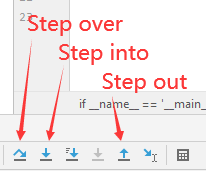Linux调试器gdb和cgdb的使用【Ubuntu】一、样例代码在介绍如何使用gdb和cgdb之前,先准备一个简单的C程序作为调试示例。假设我们有一个简单的程序example.c,它包含了一个求数组平均值的函数。#include#defineSIZE5doublecalculate_average(intarr[],intsize){intsum=0;for(inti=0;i
Linux:版本控制器git的简单使用+gdb/cgdb调试器的使用
加班敲代码的Plana
gitgdb/cgdblinux开发语言c++学习笔记
一,版本控制器git1.1概念为了能够更方便我们管理不同版本的文件,便有了版本控制器。所谓的版本控制器,就是能让你了解到⼀个文件的历史,以及它的发展过程的系统。通俗的讲就是⼀个可以记录工程的每⼀次改动和版本迭代的⼀个管理系统,同时也方便多人协同作业。目前最主流的版本控制器就是Git。Git可以控制电脑上所有格式的文件,例如doc、excel、dwg、dgn、rvt等等。对于我们开发人员来说,Git
基于Linux下的vscode c/c++开发环境搭建详细教程
墨小傲
linuxvscodec语言
vscode是文本编辑而非集成开发环境,需要经过配置才能在其上编译执行代码。本教程将具体详解在linux上配置VisualStudioCode使用GCCC++编译器(g++)和GDB调试器的方法(GCC是GNU编译器集合,GDB则是GNU调试器)。配置vscode后,将通过在VSCode中编译和调试一个简单的C++程序告知您具体该如何操作。一、先决条件安装VisualStudioCode.安装C+
STM32 开发笔记:从环境搭建到任务调度
嵌入式的小萌新
stm32笔记嵌入式硬件
今天体验了一把augment确实好用,记录一下STM32开发笔记:从环境搭建到任务调度️环境准备必需工具STM32CubeMX:图形化配置工具,用于初始化MCU外设和生成基础代码STM32CubeCLT:包含编译工具链(arm-none-eabi-gcc)和烧录工具(STM32_Programmer_CLI)CMake:跨平台构建系统,用于管理项目编译流程OpenOCD:开源调试器(可选,用于DA
idea常用插件
蓝天白云下遛狗
intellij-ideajavaide
idea常用插件PDFViewer(可以查看pdf文档在idea中)QuickFilePreview(快速查看文件)LongTimeToDateLongTimeToDate是一款IDEA插件,能够方便地将毫秒日期转换为年月日格式。用户可以通过调试器、编辑器或控制台使用此插件。安装插件可通过IDEA内置市场或从指定网址下载离线包安装。使用时,只需选中毫秒日期,右键选择’ConvertLongtoDa
C++主流编辑器特点比较
FrostedLotus·霜莲
c++编辑器开发语言
在C++开发中,选择一款合适的编辑器或集成开发环境(IDE)至关重要。本文将介绍几款常见的C++编辑器/IDE的特点,帮助开发者根据自身需求做出选择。1.Dev-C++Dev-C++是一款经典的轻量级C/C++IDE,特别适合初学者和教育用途。**主要特点:**-**轻量简洁**:安装包小(约50MB),启动快速,系统资源占用低-**集成开发环境**:内置编辑器、编译器、调试器,无需复杂配置-**
本地部署OpenHands AI助手,自动化编程提升开发效率
文章目录前言1、关于OpenHands2、部署OpenHands步骤3、简单使用openhands4、安装cpolar内网穿透5、配置公网地址6、配置固定二级子域名公网地址总结前言亲爱的朋友,是否曾在深夜面对层层叠叠的代码逻辑感到力不从心?每当调试器不断报错时,是否幻想过能有个智能伙伴分担压力?现在,一款颠覆传统开发模式的智能工具——OpenHands正式登场!这款专为开发者打造的AI助手,不仅具
解锁IDEA:Java开发神器的全面指南
奔跑吧邓邓子
必备核心技能javaintellij-ideaide全面指南
目录一、IDEA简介1.1定义与背景1.2版本介绍1.3优势分析二、IDEA安装与配置2.1下载与安装2.2基础配置2.3高级配置三、IDEA的常用功能3.1代码编辑功能3.1.1智能代码补全3.1.2实时模板3.1.3语言注入3.2代码导航功能3.2.1随处搜索3.2.2查找用例3.2.3框架特定的导航3.3调试与分析功能3.3.1全面集成调试器3.3.2内置分析器3.4版本控制功能(以Git为
GDB调试程序:使用方法和编程技巧
程序员拓荒
编程
在软件开发过程中,调试是一个至关重要的环节。GDB(GNU调试器)是一个功能强大的调试工具,可以帮助开发人员诊断和修复程序中的错误。本文将介绍GDB的基本用法和一些编程技巧,并提供一些示例源代码供参考。什么是GDB?GDB是一个用于调试程序的命令行工具。它可以帮助开发人员在程序执行过程中定位错误、追踪程序状态以及查看变量的值。GDB支持多种编程语言,包括C、C++、Objective-C、Fort
.NET开发后端常用工具软件分享
DeFunction
.net后端
在.NET开发的后端领域,有许多工具软件可以帮助开发人员提高效率、简化开发流程并改善代码质量。本文将介绍一些常用的.NET后端开发工具,并提供相应的源代码示例。VisualStudioIDEVisualStudio是微软提供的集成开发环境(IDE),是.NET开发的首选工具。它提供了丰富的功能和工具,包括代码编辑器、调试器、自动完成、代码重构、版本控制等。以下是一个使用VisualStudio创建
IDE如何快速切换JLINK版本
空气中的告白
菜鸟需知ide
JLINK是比较常用的调试器,因为产品维护,我们的电脑上可是装了好几个版本的JLINK,怎么进行快速的切换呢?方法如下:1、使用Everything工具搜索JLinkDLLUpdater.exe,找到当前需要使用的JLINK版本安装目录下的JLinkDLLUpdater.exe。2、双击JLinkDLLUpdater.exe,在弹出的窗口勾上将要使用的IDE,点击OK就搞定了。
Python学习—10大高阶调试方法!
第⑦颗VC小铁树
python学习数据库开发语言数据分析ipython
在Python开发过程中,调试是一项核心技能。无论是初级开发者还是资深工程师,掌握高效的调试技巧都能显著提升开发效率。本文将介绍10个实用的调试方法,帮助开发者更有效地定位和解决问题。包含编程资料、学习路线图、源代码、软件安装包等!【[点击这里]】!1、Python内置调试器pdb的应用Python的内置调试器pdb是一个功能强大的调试工具。它能够在程序执行过程中设置断点,检查变量状态,并支持单步
Python 3.8.5 新特性与优化全解析
轩辕姐姐
本文还有配套的精品资源,点击获取简介:Python3.8.5版本作为Python语言的一个重要更新,引入了新的语法特性如walrusoperator:=,增强了标准库功能,例如通过os.cpu_count()获取CPU核心数和time.time_ns()提高时间处理精度。性能上,优化了代码执行速度、垃圾回收和字节码编译,同时改进了help()命令和pdb调试器。安装方面,针对Windows平台提供
推荐使用JMCUProg:基于J-LINK调试器的高效MCU编程工具
平奇群Derek
推荐使用JMCUProg:基于J-LINK调试器的高效MCU编程工具MCUProgMCUprogrammerforJ-LINKandDAPLink,usingKeilMDK's*.FLMFlashingAlgorithm项目地址:https://gitcode.com/gh_mirrors/mc/MCUProg1、项目介绍JMCUProg是一个创新的微控制器编程工具,它利用J-LINK调试器的强大
利用nRF54L15-DK的DEBUG OUT接口调试用户设计的ARM处理器系统
博士熊 - 北邮
硬件设计研发管理集成电路设计arm开发硬件工程智能硬件硬件架构射频工程基带工程
1.NORDICNRF54L15DK简介nRF54L15-DK是NORDICSemiconductor公司为nRF54L系列无线通信微处理器推出的基于nRFConnectSDK(NCS)软件架构的开发套件。开发套件的硬件的电路和软件例程开源,并有丰富的课程资源,方便开发者学习和使用。nRF54L15-DK开发板上集成了J-Link编程器(Programmer)/调试器(Debugger).在调试板
Logic Error: 如何识别和修复逻辑错误
逻辑错误是指程序中的代码在语法上是正确的,但在执行时没有按预期工作。这种错误可能导致程序输出错误的结果或行为异常。逻辑错误通常比语法错误更难检测,因为它们不会产生编译或解释错误。本文将详细介绍如何识别和修复逻辑错误。一、识别逻辑错误1.理解需求和设计要识别逻辑错误,首先必须明确程序的需求和设计。确保你完全理解程序应该如何工作及其预期的行为。2.使用调试器调试器是识别逻辑错误的强大工具。通过逐步执行
Electron截取响应体
Mr_Wu2018
electronjavascript前端
constlistenAllRequests=(childWindow)=>{//启用调试器,可以选填DevTools协议版本号,默认省略,Electron会自动使用与当前Electron版本兼容的最新DevTools协议版本childWindow.webContents.debugger.attach();//启用网络跟踪childWindow.webContents.debugger.send
鸿蒙开发实战之Device Security Kit加固美颜相机安全防线
harmonyos-next
一、安全威胁全景与应对在美颜相机场景中,我们面临三大核心威胁:设备篡改风险:Root/越狱设备上的敏感数据窃取运行时攻击:内存注入、调试器附加等动态攻击固件漏洞:摄像头驱动层的潜在安全隐患DeviceSecurityKit提供四维防护:设备完整性校验(Bootloader到应用层的完整信任链)运行时防护(内存加密、反调试等)硬件安全区隔离(TEE中处理人脸特征)威胁实时响应(攻击触发自动熔断)二、
PlantSimulation预定义异常处理及捕获
沐雨潇竹
PlantSimulation预定义异常异常处理
setErrorHandler函数setErrorHandler将您作为数据类型对象参数输入的Method设置为全局错误处理方法。当SimTalk方法中出现运行时错误时,它会禁止打开调试器。这个全局错误处理方法只会在程序没有找到单独的异常处理方法时才会执行当您设置全局错误处理方法时,当SimTalk方法中发生运行时错误时,将调用此方法。传递给该方法的三个参数:•带有错误消息的字符串。您必须将字符串
从入门到精通:详解Linux环境基础开发工具的使用
前言在这篇文章中,我将深入学习和理解Linux环境基础开发工具的使用。无论你是初学者还是有一定经验的开发者,相信这篇文章都会对你有所帮助。我们将详细讲解软件包管理器、编辑器、编译器、调试器、自动化构建工具以及版本控制工具的使用。Linux软件包管理器YUM什么是软件包在Linux下安装软件,一个常用的办法是下载到程序的源代码,并进行编译,得到可执行程序。但是这样太麻烦了,于是有些人把一些常用的软件
ARM/Linux嵌入式面经(三四):CVTE
TrustZone_
ARM/Linux嵌入式面试arm开发单例模式
文章目录1、C++单例模式回答C++单例模式问题2、虚函数、纯虚函数虚函数(VirtualFunctions)纯虚函数(PureVirtualFunctions)虚函数与纯虚函数的主要区别面试官可能的追问3、堆和栈区别回答堆和栈的区别面试官可能的追问怎么判断栈的大小?方法?1.**编译器和链接器设置**2.**运行时检查**3.**使用调试器和工具**4.**查看系统文档和限制**面试官追问:4、
认识一下jvmti(很厉害的)
烬柒小云
安卓逆向javajvmjava开发语言
JVMTI详解:Java虚拟机工具接口一、JVMTI概述JVMTI(JavaVirtualMachineToolInterface)是Java虚拟机(JVM)提供的一套原生编程接口,用于实现Java程序的调试、性能分析、监控和诊断等工具。它是JVM工具生态(如调试器、Profiler、内存分析工具)的基础,允许开发者通过本地代码(如C/C++)与JVM进行交互,获取运行时数据或控制程序执行流程。二
计算机的硬盘有几个分区,电脑硬盘分几个区合适?电脑硬盘分区小窍门
都不叫阿布呢
计算机的硬盘有几个分区
在日常使用电脑的时候,我们都会根据自己的喜好为硬盘进行分区。但也有部分用户不知道电脑硬盘分几个区比较好。其实,硬盘分区的不同,会显著影响传文件的速度和电脑的空间。那么下面就让小编为大家带来硬盘分区小窍门。电脑硬盘分几个区最好?一般建议硬盘分区只分两个区,系统盘分大点,其它杂七杂八的放在非系统盘就可以了。硬盘分区了除了能把文件分得很清楚之外,还能在重装系统时,防止数据丢失,而且还可以更快的清理磁盘碎
富芮坤FR800X系列之软件开发工具链(如IDE、编译器、调试器等)
小武编程
ide
文章目录一、IDE(集成开发环境)二、编译器三、调试器四、其他辅助工具五、小结FR800x系列作为一款低功耗蓝牙芯片,其软件开发工具链对于开发者来说至关重要。以下是对FR800x软件开发工具链的详细介绍,包括IDE(集成开发环境)、编译器、调试器等关键组件:一、IDE(集成开发环境)IDE是FR800x软件开发的核心工具,它提供了代码编辑、编译、调试、项目管理等多种功能,极大地提高了开发效率。针对
c语言中assert函数,C++ 中assert断言函数的基本用法
每日优质搜罗
c语言中assert函数
在我们的实际开发过程之中,常常会出现一些隐藏得很深的BUG,或者是一些概率性发生的BUG,通常这些BUG在我们调试的过程中不会出现很明显的问题,但是如果我们将其发布,在用户的各种运行环境下,这些程序可能就会露出马脚了。那么,如何让我们的程序更明显的暴露出问题呢?这种情况下,我们一般都会使用assert断言函数,这是C语言标准库提供的一个函数,也就是说,它的使用与操作系统平台,调试器种类无关。我们只
Spring4.1新特性——综述
jinnianshilongnian
spring 4.1
目录
Spring4.1新特性——综述
Spring4.1新特性——Spring核心部分及其他
Spring4.1新特性——Spring缓存框架增强
Spring4.1新特性——异步调用和事件机制的异常处理
Spring4.1新特性——数据库集成测试脚本初始化
Spring4.1新特性——Spring MVC增强
Spring4.1新特性——页面自动化测试框架Spring MVC T
Schema与数据类型优化
annan211
数据结构mysql
目前商城的数据库设计真是一塌糊涂,表堆叠让人不忍直视,无脑的架构师,说了也不听。
在数据库设计之初,就应该仔细揣摩可能会有哪些查询,有没有更复杂的查询,而不是仅仅突出
很表面的业务需求,这样做会让你的数据库性能成倍提高,当然,丑陋的架构师是不会这样去考虑问题的。
选择优化的数据类型
1 更小的通常更好
更小的数据类型通常更快,因为他们占用更少的磁盘、内存和cpu缓存,
第一节 HTML概要学习
chenke
htmlWebcss
第一节 HTML概要学习
1. 什么是HTML
HTML是英文Hyper Text Mark-up Language(超文本标记语言)的缩写,它规定了自己的语法规则,用来表示比“文本”更丰富的意义,比如图片,表格,链接等。浏览器(IE,FireFox等)软件知道HTML语言的语法,可以用来查看HTML文档。目前互联网上的绝大部分网页都是使用HTML编写的。
打开记事本 输入一下内
MyEclipse里部分习惯的更改
Array_06
eclipse
继续补充中----------------------
1.更改自己合适快捷键windows-->prefences-->java-->editor-->Content Assist-->
Activation triggers for java的右侧“.”就可以改变常用的快捷键
选中 Text
近一个月的面试总结
cugfy
面试
本文是在学习中的总结,欢迎转载但请注明出处:http://blog.csdn.net/pistolove/article/details/46753275
前言
打算换个工作,近一个月面试了不少的公司,下面将一些面试经验和思考分享给大家。另外校招也快要开始了,为在校的学生提供一些经验供参考,希望都能找到满意的工作。
HTML5一个小迷宫游戏
357029540
html5
通过《HTML5游戏开发》摘抄了一个小迷宫游戏,感觉还不错,可以画画,写字,把摘抄的代码放上来分享下,喜欢的同学可以拿来玩玩!
<html>
<head>
<title>创建运行迷宫</title>
<script type="text/javascript"
10步教你上传githib数据
张亚雄
git
官方的教学还有其他博客里教的都是给懂的人说得,对已我们这样对我大菜鸟只能这么来锻炼,下面先不玩什么深奥的,先暂时用着10步干净利索。等玩顺溜了再用其他的方法。
操作过程(查看本目录下有哪些文件NO.1)ls
(跳转到子目录NO.2)cd+空格+目录
(继续NO.3)ls
(匹配到子目录NO.4)cd+ 目录首写字母+tab键+(首写字母“直到你所用文件根就不再按TAB键了”)
(查看文件
MongoDB常用操作命令大全
adminjun
mongodb操作命令
成功启动MongoDB后,再打开一个命令行窗口输入mongo,就可以进行数据库的一些操作。输入help可以看到基本操作命令,只是MongoDB没有创建数据库的命令,但有类似的命令 如:如果你想创建一个“myTest”的数据库,先运行use myTest命令,之后就做一些操作(如:db.createCollection('user')),这样就可以创建一个名叫“myTest”的数据库。
一
bat调用jar包并传入多个参数
aijuans
下面的主程序是通过eclipse写的:
1.在Main函数接收bat文件传递的参数(String[] args)
如: String ip =args[0]; String user=args[1]; &nbs
Java中对类的主动引用和被动引用
ayaoxinchao
java主动引用对类的引用被动引用类初始化
在Java代码中,有些类看上去初始化了,但其实没有。例如定义一定长度某一类型的数组,看上去数组中所有的元素已经被初始化,实际上一个都没有。对于类的初始化,虚拟机规范严格规定了只有对该类进行主动引用时,才会触发。而除此之外的所有引用方式称之为对类的被动引用,不会触发类的初始化。虚拟机规范严格地规定了有且仅有四种情况是对类的主动引用,即必须立即对类进行初始化。四种情况如下:1.遇到ne
导出数据库 提示 outfile disabled
BigBird2012
mysql
在windows控制台下,登陆mysql,备份数据库:
mysql>mysqldump -u root -p test test > D:\test.sql
使用命令 mysqldump 格式如下: mysqldump -u root -p *** DBNAME > E:\\test.sql。
注意:执行该命令的时候不要进入mysql的控制台再使用,这样会报
Javascript 中的 && 和 ||
bijian1013
JavaScript&&||
准备两个对象用于下面的讨论
var alice = {
name: "alice",
toString: function () {
return this.name;
}
}
var smith = {
name: "smith",
[Zookeeper学习笔记之四]Zookeeper Client Library会话重建
bit1129
zookeeper
为了说明问题,先来看个简单的示例代码:
package com.tom.zookeeper.book;
import com.tom.Host;
import org.apache.zookeeper.WatchedEvent;
import org.apache.zookeeper.ZooKeeper;
import org.apache.zookeeper.Wat
【Scala十一】Scala核心五:case模式匹配
bit1129
scala
package spark.examples.scala.grammars.caseclasses
object CaseClass_Test00 {
def simpleMatch(arg: Any) = arg match {
case v: Int => "This is an Int"
case v: (Int, String)
运维的一些面试题
yuxianhua
linux
1、Linux挂载Winodws共享文件夹
mount -t cifs //1.1.1.254/ok /var/tmp/share/ -o username=administrator,password=yourpass
或
mount -t cifs -o username=xxx,password=xxxx //1.1.1.1/a /win
Java lang包-Boolean
BrokenDreams
boolean
Boolean类是Java中基本类型boolean的包装类。这个类比较简单,直接看源代码吧。
public final class Boolean implements java.io.Serializable,
读《研磨设计模式》-代码笔记-命令模式-Command
bylijinnan
java设计模式
声明: 本文只为方便我个人查阅和理解,详细的分析以及源代码请移步 原作者的博客http://chjavach.iteye.com/
import java.util.ArrayList;
import java.util.Collection;
import java.util.List;
/**
* GOF 在《设计模式》一书中阐述命令模式的意图:“将一个请求封装
matlab下GPU编程笔记
cherishLC
matlab
不多说,直接上代码
gpuDevice % 查看系统中的gpu,,其中的DeviceSupported会给出matlab支持的GPU个数。
g=gpuDevice(1); %会清空 GPU 1中的所有数据,,将GPU1 设为当前GPU
reset(g) %也可以清空GPU中数据。
a=1;
a=gpuArray(a); %将a从CPU移到GPU中
onGP
SVN安装过程
crabdave
SVN
SVN安装过程
subversion-1.6.12
./configure --prefix=/usr/local/subversion --with-apxs=/usr/local/apache2/bin/apxs --with-apr=/usr/local/apr --with-apr-util=/usr/local/apr --with-openssl=/
sql 行列转换
daizj
sql行列转换行转列列转行
行转列的思想是通过case when 来实现
列转行的思想是通过union all 来实现
下面具体例子:
假设有张学生成绩表(tb)如下:
Name Subject Result
张三 语文 74
张三 数学 83
张三 物理 93
李四 语文 74
李四 数学 84
李四 物理 94
*/
/*
想变成
姓名 &
MySQL--主从配置
dcj3sjt126com
mysql
linux下的mysql主从配置: 说明:由于MySQL不同版本之间的(二进制日志)binlog格式可能会不一样,因此最好的搭配组合是Master的MySQL版本和Slave的版本相同或者更低, Master的版本肯定不能高于Slave版本。(版本向下兼容)
mysql1 : 192.168.100.1 //master mysq
关于yii 数据库添加新字段之后model类的修改
dcj3sjt126com
Model
rules:
array('新字段','safe','on'=>'search')
1、array('新字段', 'safe')//这个如果是要用户输入的话,要加一下,
2、array('新字段', 'numerical'),//如果是数字的话
3、array('新字段', 'length', 'max'=>100),//如果是文本
1、2、3适当的最少要加一条,新字段才会被
sublime text3 中文乱码解决
dyy_gusi
Sublime Text
sublime text3中文乱码解决
原因:缺少转换为UTF-8的插件
目的:安装ConvertToUTF8插件包
第一步:安装能自动安装插件的插件,百度“Codecs33”,然后按照步骤可以得到以下一段代码:
import urllib.request,os,hashlib; h = 'eb2297e1a458f27d836c04bb0cbaf282' + 'd0e7a30980927
概念了解:CGI,FastCGI,PHP-CGI与PHP-FPM
geeksun
PHP
CGI
CGI全称是“公共网关接口”(Common Gateway Interface),HTTP服务器与你的或其它机器上的程序进行“交谈”的一种工具,其程序须运行在网络服务器上。
CGI可以用任何一种语言编写,只要这种语言具有标准输入、输出和环境变量。如php,perl,tcl等。 FastCGI
FastCGI像是一个常驻(long-live)型的CGI,它可以一直执行着,只要激活后,不
Git push 报错 "error: failed to push some refs to " 解决
hongtoushizi
git
Git push 报错 "error: failed to push some refs to " .
此问题出现的原因是:由于远程仓库中代码版本与本地不一致冲突导致的。
由于我在第一次git pull --rebase 代码后,准备push的时候,有别人往线上又提交了代码。所以出现此问题。
解决方案:
1: git pull
2:
第四章 Lua模块开发
jinnianshilongnian
nginxlua
在实际开发中,不可能把所有代码写到一个大而全的lua文件中,需要进行分模块开发;而且模块化是高性能Lua应用的关键。使用require第一次导入模块后,所有Nginx 进程全局共享模块的数据和代码,每个Worker进程需要时会得到此模块的一个副本(Copy-On-Write),即模块可以认为是每Worker进程共享而不是每Nginx Server共享;另外注意之前我们使用init_by_lua中初
java.lang.reflect.Proxy
liyonghui160com
1.简介
Proxy 提供用于创建动态代理类和实例的静态方法
(1)动态代理类的属性
代理类是公共的、最终的,而不是抽象的
未指定代理类的非限定名称。但是,以字符串 "$Proxy" 开头的类名空间应该为代理类保留
代理类扩展 java.lang.reflect.Proxy
代理类会按同一顺序准确地实现其创建时指定的接口
Java中getResourceAsStream的用法
pda158
java
1.Java中的getResourceAsStream有以下几种: 1. Class.getResourceAsStream(String path) : path 不以’/'开头时默认是从此类所在的包下取资源,以’/'开头则是从ClassPath根下获取。其只是通过path构造一个绝对路径,最终还是由ClassLoader获取资源。 2. Class.getClassLoader.get
spring 包官方下载地址(非maven)
sinnk
spring
SPRING官方网站改版后,建议都是通过 Maven和Gradle下载,对不使用Maven和Gradle开发项目的,下载就非常麻烦,下给出Spring Framework jar官方直接下载路径:
http://repo.springsource.org/libs-release-local/org/springframework/spring/
s
Oracle学习笔记(7) 开发PLSQL子程序和包
vipbooks
oraclesql编程
哈哈,清明节放假回去了一下,真是太好了,回家的感觉真好啊!现在又开始出差之旅了,又好久没有来了,今天继续Oracle的学习!
这是第七章的学习笔记,学习完第六章的动态SQL之后,开始要学习子程序和包的使用了……,希望大家能多给俺一些支持啊!
编程时使用的工具是PLSQL

![]()
